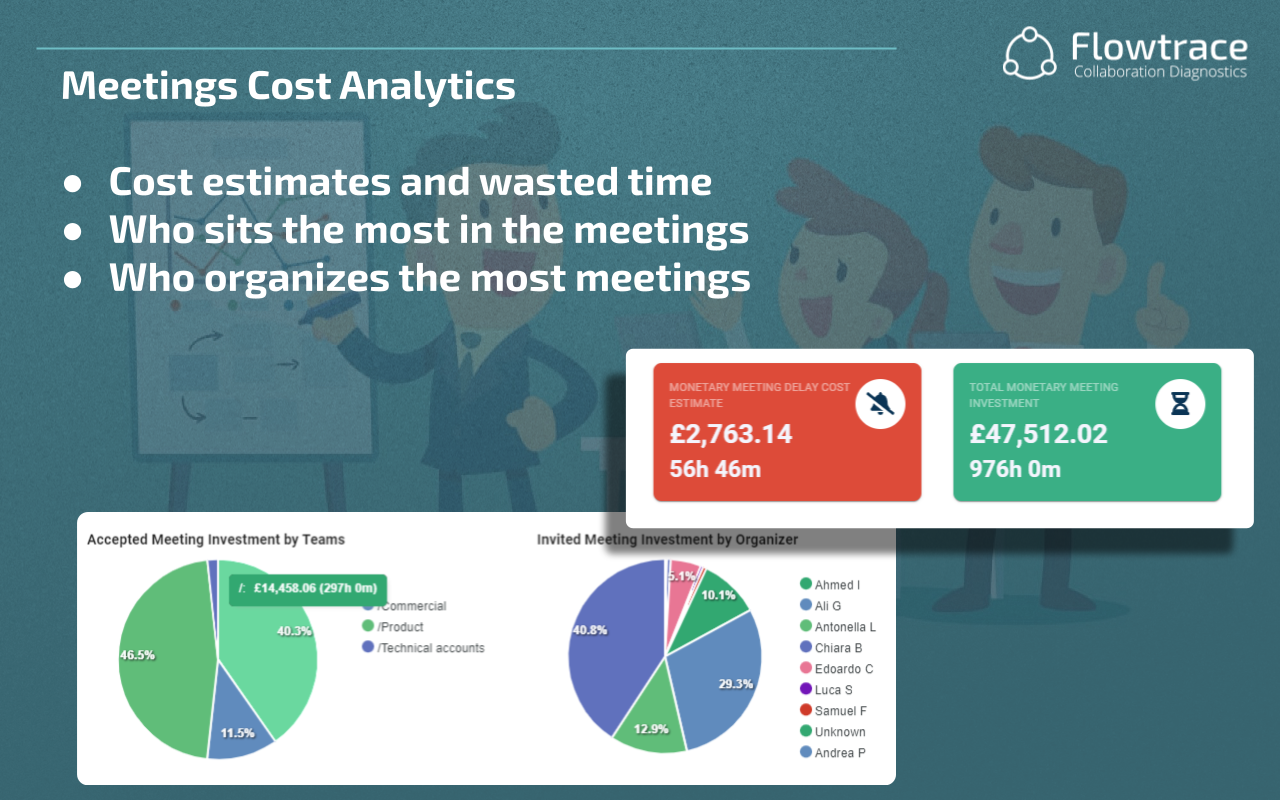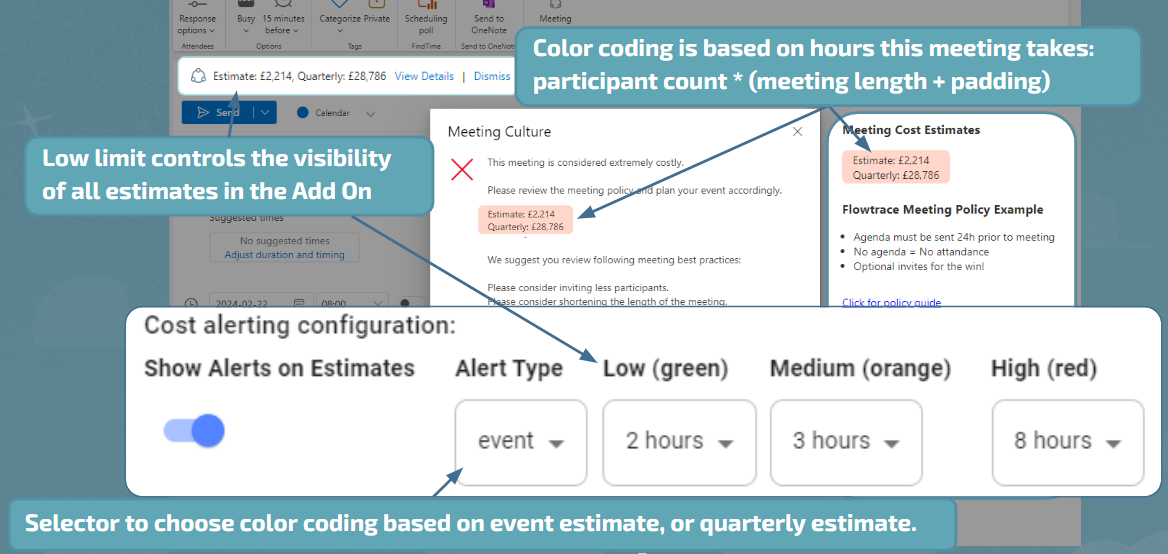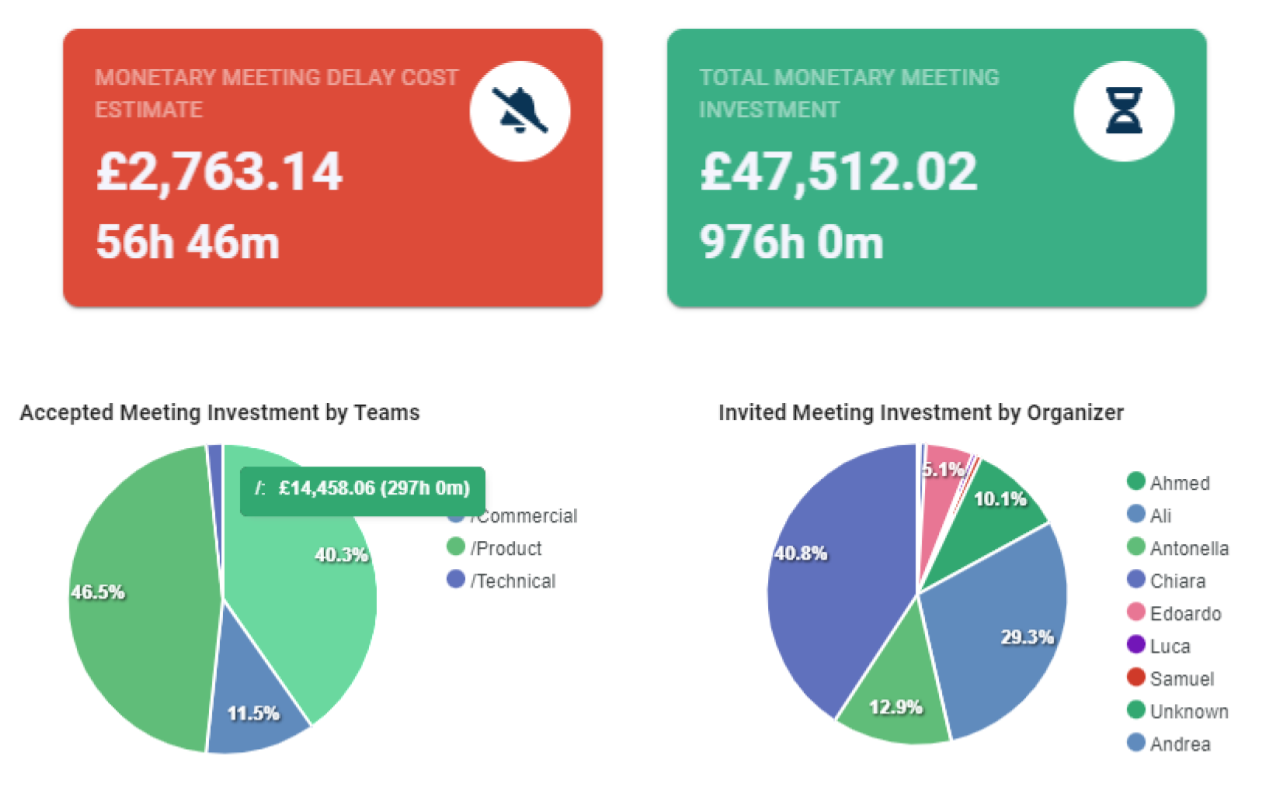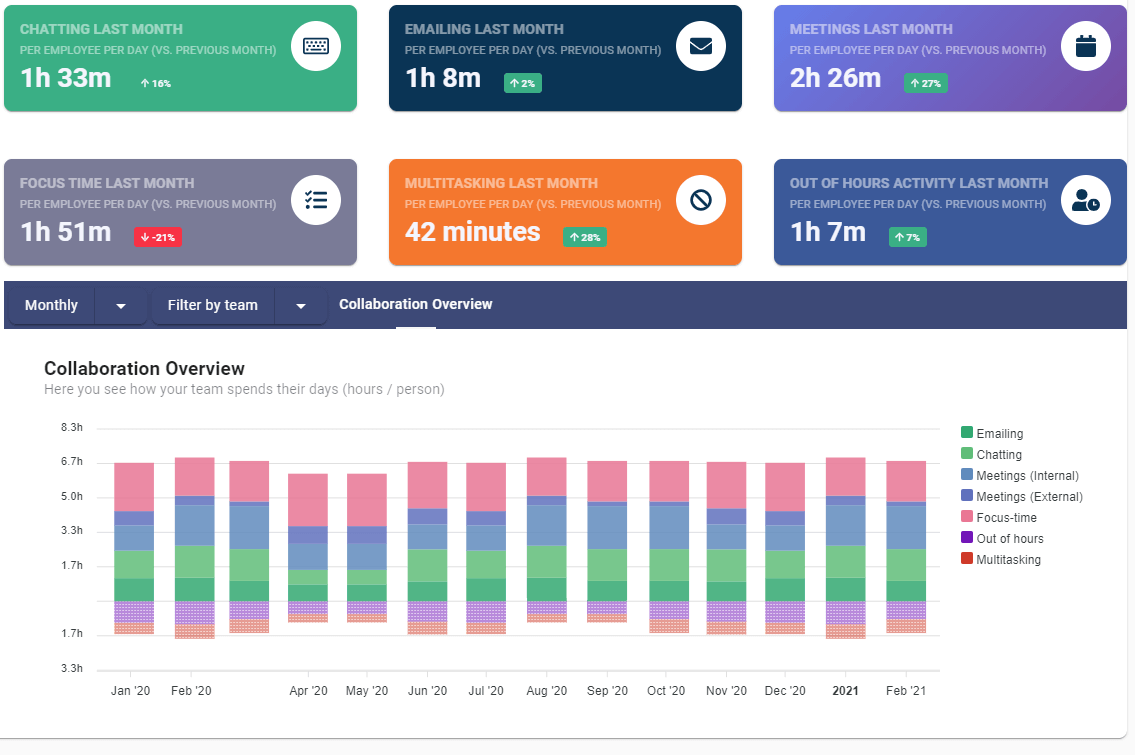The business world has seen a significant shift toward virtual meetings, a trend accelerated by the global shift to remote work due to health crises and technological advancements. This evolution from traditional face-to-face interactions to digital conferencing has fundamentally altered how businesses operate, offering new levels of flexibility and connectivity. However, this shift also brings a host of new considerations, particularly regarding the costs associated with virtual meetings.
For leaders, understanding these costs is crucial—not just the direct expenses of technologies and tools required to facilitate such meetings but also the indirect costs such as time spent in unproductive meetings, the impact on employee well-being, and potential technical issues. These factors can affect overall operational efficiency and must be managed carefully to maximize the benefits of virtual communications.
As organizations continue to rely on virtual meetings as a key component of their operational strategy, it becomes essential to understand these costs comprehensively to ensure sustainable business practices.

Direct Costs of Virtual Meetings
The transition to virtual meetings has introduced several direct costs that organizations must manage to ensure efficient and effective communication. These expenses encompass the technological infrastructure required to support virtual interactions, which includes several key components:
- Software Licenses: Most virtual meetings require reliable software platforms such as Zoom, Microsoft Teams, or Google Meet. These platforms often come with subscription costs that vary based on the number of users, features required, and level of security provided. For instance, advanced features like increased participant limits, recording capabilities, and administrative controls may incur additional costs.
- Hardware: Adequate hardware is essential for effective virtual meetings. This includes not only computers and mobile devices but also specialized equipment like webcams, microphones, and headphones. High-quality audio and video equipment is crucial for clear communication and can significantly enhance meeting quality.
- Bandwidth Costs: Reliable, high-speed internet is a prerequisite for virtual meetings. Organizations may need to upgrade their existing internet plans or invest in higher bandwidth to accommodate simultaneous video conferencing across the workforce, especially in large companies or where employees work remotely from areas with varying internet speeds.
- Training and Technical Support: Ensuring that all participants are able to use virtual meeting tools effectively involves initial training and ongoing support. This might include training sessions, user manuals, and access to IT support for troubleshooting. Effective training helps reduce downtime during meetings due to technical difficulties and improves overall productivity.
According to a report by Owl Labs, as of 2020, around 92% of small businesses were using video conferencing solutions, underscoring the widespread adoption and inherent costs associated with these technologies. This highlights the importance for businesses to consider these costs carefully and plan for them as part of their operational budget to maximize the returns on their investment in virtual meeting technologies.
Indirect Costs and Efficiency Concerns

While virtual meetings offer many advantages, they also introduce several indirect costs and efficiency concerns that can impact an organization's productivity. These hidden costs are often overlooked but can significantly affect the overall effectiveness of remote communication strategies.
- Time Spent Managing Technical Issues: Virtual meetings can sometimes be plagued by technical issues, ranging from connectivity problems to software glitches. The time spent resolving these issues can accumulate, detracting from productive work. Employees and IT staff may need to invest considerable time troubleshooting, which diverts resources away from core business activities.
- Virtual Meeting Fatigue: Prolonged exposure to virtual meetings can lead to what is commonly referred to as "Zoom fatigue," characterized by tiredness, worry, or burnout associated with overusing virtual platforms of communication. According to a study by Stanford News, the excessive close-up eye contact, the cognitive load of producing and interpreting non-verbal cues, and the increased self-evaluation from staring at video feeds contribute to this fatigue, impacting employee productivity and well-being.
- Impact on Employee Effectiveness: Virtual meetings can also affect employee effectiveness through reduced engagement and communication barriers. The lack of physical presence can make it harder for participants to stay focused and engaged, especially in larger groups. Furthermore, subtle non-verbal cues that are vital for communication are often lost in virtual settings, leading to misunderstandings and inefficiencies. This can be particularly challenging in diverse teams where cultural differences might influence communication styles and interpretations.
By recognizing and addressing these indirect costs, organizations can better prepare and equip their teams to handle the challenges associated with virtual meetings. This involves not only investing in robust technical infrastructure and providing adequate training but also adopting meeting best practices to minimize fatigue and maximize engagement. Balancing the frequency and necessity of virtual meetings with asynchronous communication methods can also help mitigate some of these challenges, ensuring that virtual meetings remain an asset rather than a liability.
Measuring Virtual Meeting Costs with Flowtrace
In remote work, managing and understanding the meeting costs associated with virtual meetings is crucial. An innovative solution is the meeting cost calculator by Flowtrace which aids organizations in quantifying these costs effectively. This calculator is designed to help leaders gain a comprehensive understanding of the financial implications of their virtual meeting practices.
Functionality of the Flowtrace Meeting Cost Calculator
- See Cost Estimates in Real Time: Flowtrace allows leaders to view and assess the financial impact of virtual meetings in real time. This feature is instrumental in making immediate and informed decisions about meeting management based on cost implications.

- See The Cost of Late Meetings: The calculator also highlights the costs associated with delays in meeting start times, providing insights into how tardiness can affect the overall financial efficiency of meeting schedules.

- Integrate Meeting Policies: Flowtrace supports the integration of
organizational meeting policies into the cost calculation process. This alignment helps ensure that all meetings adhere to set guidelines and practices, optimizing costs and enhancing meeting discipline and effectiveness.

Benefits of Using the Calculator
- Strategic Planning: By providing a detailed breakdown of both direct and indirect costs, the Flowtrace meeting cost calculator enables strategic planning and better resource allocation. Organizations can use this data to make informed decisions about optimizing meeting lengths, adjusting frequencies, or even changing the platform or technology used to reduce costs.
- Enhancing Meeting Efficiency: The insights gained from the Flowtrace calculator also assist in enhancing overall meeting efficiency. Understanding the cost implications can drive companies to implement stricter meeting protocols, such as setting clear agendas, limiting meeting durations, and ensuring that only essential personnel are invited to participate.
By integrating such tools into their operational strategy, companies can not only keep a close tab on the expenses related to virtual meetings but also take proactive steps to enhance productivity and cost-efficiency.

Optimizing Virtual Meeting Costs
Reducing the costs associated with virtual meetings requires a combination of strategic scheduling, technology choice, and effective communication practices. By implementing these strategies, organizations can enhance the productivity of their meetings while also ensuring they are cost-efficient.
Optimizing Schedules and Durations
- Consolidate Meetings: Instead of multiple shorter meetings throughout the week, consider consolidating discussions into a single, longer meeting if topics are related. This reduces the frequency of meetings and can cut down on setup time and interruptions to the workday.
- Limit Meeting Times: Establish clear policies to limit the duration of meetings. Encouraging shorter, more focused sessions helps reduce the cognitive load on participants and can lead to quicker decision-making. For instance, adopting a default meeting length of 30 minutes encourages participants to address topics concisely.

- Synchronous and Asynchronous Balance: Leverage asynchronous communication methods for updates or discussions that do not require real-time interaction. Tools like shared documents or recorded video updates can reduce the need for live meetings and allow participants to engage at their own pace.
Choosing Cost-Effective Technologies
- Evaluate Platform Needs: Assess the features truly necessary for effective virtual meetings. Opt for platforms that offer the best balance between cost and functionality. Avoid paying for premium features that are seldom used.
- Utilize Open Source or Free Tools: Consider using open-source or free collaboration tools that can meet the needs without incurring high costs. Many reliable platforms offer free versions that are sufficient for small to medium-sized teams.
Training and Best Practices in Virtual Communication
- Effective Communication Training: Provide training for employees on effective virtual communication to enhance meeting effectiveness. This includes teaching best practices such as how to prepare for a meeting, manage time during the meeting, and follow up on action items.
- Best Practice Guidelines: Develop and disseminate guidelines on best practices for virtual meetings. This should include advice on managing participation, using visuals effectively, and ensuring clear audio and video quality.
Cultural Considerations
- Promote a Meeting-Efficient Culture: Foster a meeting culture that values efficient meetings. Encourage team leaders to model effective meeting behaviors and recognize teams that demonstrate cost-effective meeting practices.
- Feedback Mechanisms: Implement mechanisms for gathering feedback on meeting effectiveness and satisfaction. This feedback can be used to continuously refine meeting practices and technologies.
By integrating these strategies, organizations can significantly optimize the costs related to conducting virtual meetings. Through careful planning, judicious use of technology, and effective training, companies can ensure that their virtual meetings are both productive and economical.
Long-Term Benefits of Effective Virtual Meeting Management
Effective management of virtual meeting costs is not just about immediate savings; it also sets the stage for substantial long-term benefits that can enhance the overall productivity and agility of an organization. By optimizing virtual meeting practices, companies can achieve sustained reductions in operational costs while improving the efficiency and output of their teams.
Sustainability and Productivity Gains
- Reduced Operational Costs: Streamlining virtual meetings reduces the frequency and duration of unnecessary meetings, which directly lowers the costs associated with digital communication platforms and employee time. Over time, these savings accumulate, leading to a significant reduction in overall operational expenses.
- Increased Employee Productivity: Effective meeting management helps minimize meeting fatigue among employees, preserving their energy for core business tasks. By focusing on essential meetings and maintaining concise, purpose-driven agendas, employees can spend more time on productive activities, thereby increasing the overall output of the organization.

Scalability and Flexibility
- Scalable Solutions: Well-managed virtual meeting practices are easily scalable. This flexibility is crucial for businesses looking to expand or adapt to changing market conditions. Efficient virtual meeting strategies can be scaled up to include more participants or adapted to include new technologies without a significant increase in costs.
- Enhanced Flexibility: Virtual meetings inherently offer flexibility, allowing team members to connect from anywhere in the world. Effective management of these meetings ensures that this flexibility is maximized without compromising the quality of communication. This adaptability is particularly beneficial in today’s globalized business environment, where teams often span multiple time zones and geographies.
Cultivating a Progressive Work Culture
- Promotion of a Modern Work Environment: Implementing and managing cost-effective virtual meeting practices reflect a company’s commitment to leveraging modern technologies and practices. This not only helps in attracting talent who value flexibility and innovation but also builds a culture that promotes continuous improvement and adaptability.
By focusing on the long-term benefits of effective virtual meeting management, companies not only see immediate improvements in cost efficiency and productivity but also position themselves as adaptive, forward-thinking organizations ready to meet the challenges of a dynamic business landscape. Effective virtual meeting practices thus become a cornerstone of strategic operational management, driving sustained growth and success.
Maximizing Efficiency and Productivity in Virtual Meetings
Understanding and managing the costs associated with virtual meetings is essential for modern businesses aiming to optimize their operational efficiency and productivity. As organizations continue to embrace remote and hybrid work models, the ability to conduct cost-effective and productive virtual meetings becomes increasingly critical. These meetings not only require an investment in technology and tools but also in strategies that enhance their effectiveness and minimize potential drawbacks such as virtual fatigue and time wastage.
Leaders are encouraged to leverage meeting analytics from Flowtrace, including the meeting cost calculator to gain a deeper understanding of the true costs of virtual meetings. By systematically analyzing meeting data, organizations can identify inefficiencies and implement targeted improvements that reduce costs and enhance meeting productivity.






